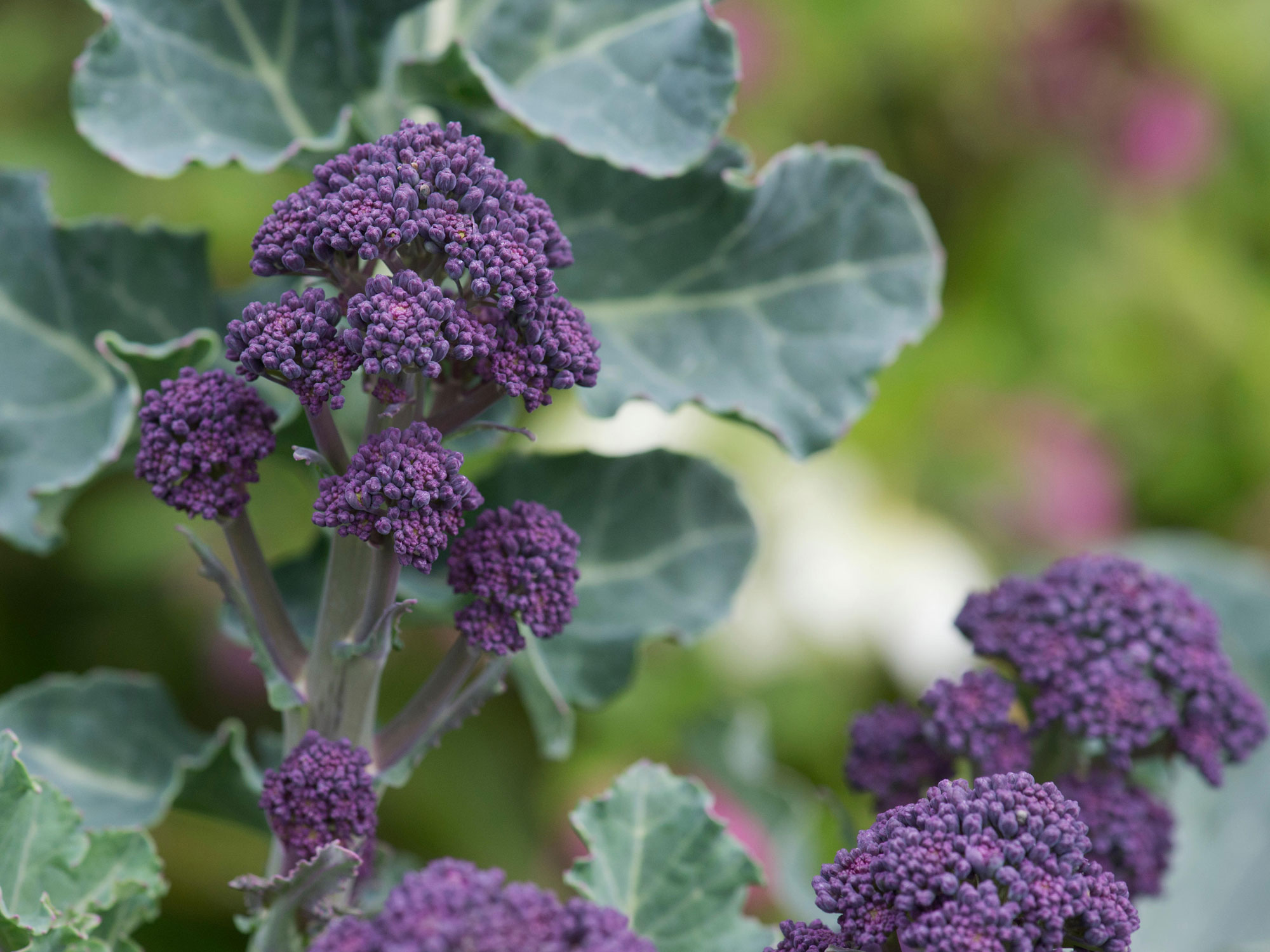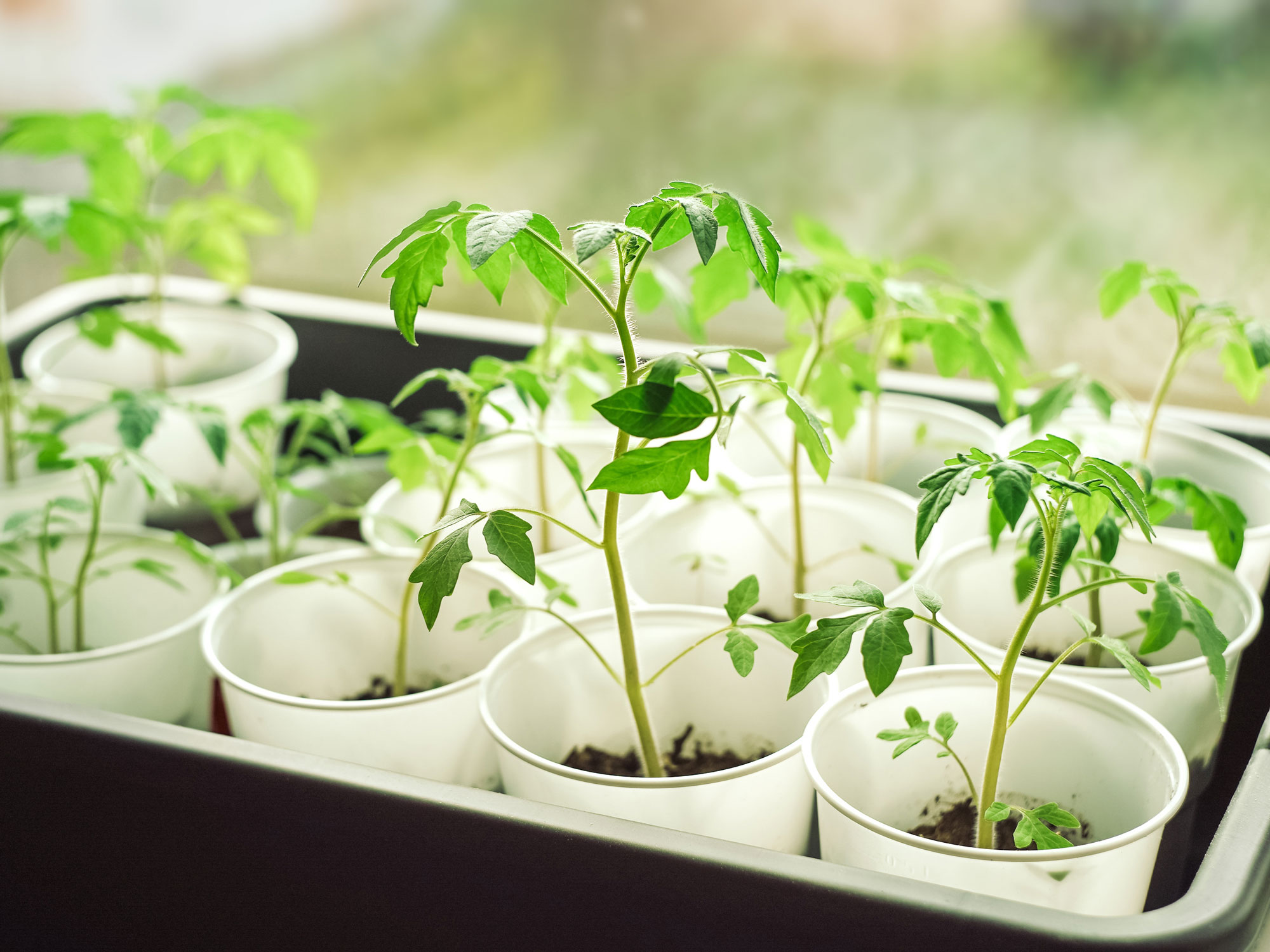7 Vegetables You Can Plant in February – Our Favorite Varieties That Can be Either Sown or Planted Outdoors Now
Get planting these easy salad and vegetable varieties now and you will soon have plenty of fresh early spring crops

If you grow according to the season then vegetable cultivation becomes a breeze because your plants thrive when given the conditions they love. If you live in a warm climate there are many varieties you can grow in the ground year round, so February is a great time for sowing seeds outdoors to boost what you've already got going on.
If you live in a cold climate with a short growing season it's best to grow seeds under cover and transplant the seedlings outdoors after your last frost date. This will definitely give you a head start on the growing season. Alternatively sow them in the ground on warm and sunny days when the soil has warmed up but have good protection on hand to cosset your seedlings if a cold snap is on the way.
Whether you're sowing or planting indoors or out in your vegetable garden, it's good to feel the soil in your hands again after the winter break and get growing your own crops. Here are 7 of our favorite vegetables to plant in February.

7 vegetables to plant in February
Now is the time for planting cool season crops, also known as frost-tolerant vegetables. 'As their name suggests, these thrive in the cooler temperatures of spring, fall and even a mild to moderate winter,' explains Resh Gala, New Jersey based organic gardener and author of Vegetable Gardening Made Easy, available from Amazon. 'A few examples are spinach, beets, lettuce and brassicas like kale. They can all handle a light to medium frost.'
There are plenty of other options to choose from too so take your pick from our expert round-up of best vegetables to plant in February.
1. Snap peas

The fresh green shoots of the sugar snap pea are delicious eaten raw if you can't wait for the pods
Peas are one of the most reliable early crops and nothing beats eating them fresh from the pod. The good news is seeds of delicious fresh-off-the-vine snap peas can be sown now. In fact, for optimum flavor it's a good idea to start them off in cool weather.
The 'Little SnapPea Crunch' from Burpee is a versatile new variety of snap pea that is container friendly and can be planted up for balconies and patios. 'It combines the best qualities of a snap pea – plump pods bursting with juicy sweetness, and refreshing crunch – in compact plants with self-supporting vines,' according to the team of expert growers at Burpee.
The Livingetc newsletters are your inside source for what’s shaping interiors now - and what’s next. Discover trend forecasts, smart style ideas, and curated shopping inspiration that brings design to life. Subscribe today and stay ahead of the curve.
Sow now and you can look forward to your first crop in late spring. For an extended harvest repeat sow 2–3 times, 7–10 days apart. First sowing times for growing peas will vary according to your Zone but if you live in a mild climate they should be high on your list of what to plant in February. If you live in a cooler climate keep an eye on the weather report and protect your crop if frost threatens.
But how to protect plants from frost? 'Fleece fabric and frost blankets are thin, breathable materials than can protect your crops from frost damage,' explains Resh Gala. 'They are generally draped over the crops and allow air and water to pass through.'
2. Spinach

Snip fresh baby spinach leaves and add to the salad bowl
Container gardening is a great way of growing spinach at this time of year, especially in a large container on a balcony or patio that you can quickly cover if frost threatens is a great way to get a good supply of fresh leafy greens at this time of year. Choose a baby leaf variety that crops in 30 days. If you live in an area with mild winters you will be able to pick leaves in early spring.
Spinach is an example of a vegetable that thrives on cool weather. 'When it gets too hot, these plants tend to bolt (go to flower) and their flavor profile changes,' explains Resh Gala. 'They usually end up tasting spicy or bitter.'
You can grow spinach in the ground too if you have a well-prepared, fertile, moist soil. Sow spinach seeds (try these from Walmart) thinly at a depth of about 1/2 inch and 12 inches apart. When large enough to handle, thin out seedlings to 2 inches apart and add the thinnings to the salad bowl for some power packed micro leaf nutrients.
Keep plants well watered during dry periods to promote rapid growth. Sow more seeds every 3 to 4 weeks for a continual supply of fresh spinach leaves right through spring and summer, making sure you harvest them regularly.
3. Radishes

Radishes are quick to crop (usually within four weeks)
Choose a variety of early radish that's quick to sprout such as ‘Fabuloso’ to bring crispy zest to salads. Sow seeds in rows about 6 inches apart after danger of frost has passed and you'll see seedlings emerge after 4-6 days. Thin them to about 2 inches. Water continuously, especially during dry periods, as these are thirsty plants.
You can pull up spring radishes about 25 days after planting. If you wait too long to harvest they can become pithy. If in doubt you can always taste one or two to see if they're ready. Be sure to finish your spring crop before the warm weather arrives.
As well as being one of the best vegetables to plant in February, if you live in a frost free area you can keep your radish crop coming all year round, resowing every 14 days for a non-stop harvest. Try these Crimson Giant ones from Burpee for a generous crop.
4. 'Little Gem' lettuce

Keep lettuce well watered during dry periods to promote rapid growth
'Little Gem' is one of the earliest varieties of cos lettuce to mature, producing small compact plants with a crisp, sweet heart. This little lettuce variety is a great choice for apartment living and other small space container growing. The leaves are decorative too, so it doesn't look out of place mixed in with pots of flowers.
Quick and easy to grow, you can Little Gem sow seeds (like these from Walmart) in the ground outdoors now. Keep the soil moist and weed free at all times. Seedlings should start to appear after approximately 7-14 days. When they are 2 inches tall thin them out to a final spacing of 8 inches apart. Sow a new row every 2-3 weeks to extend your harvest period.
'For the best quality pick lettuce early rather than late as lettuce allowed to grow too long may be bitter and tough,' according to the experts at Burpee. 'Try to harvest in the morning when the leaves are crisp, sweet and full of moisture.' Remember lettuce is one of those vegetables you can grow inside all year round, too.
5. Garlic chives

Garlic chive flowers are also edible, so can be used as a garnish or added to salads
Strictly speaking garlic chives are a herb, not a vegetable (although related to the onion) but we love the idea of having a supply of easy to use garlic flavoured leaves on hand for those moments when prepping garlic cloves seems like a faff.
'There is so much to recommend garlic chives in the garden,' agrees horticulturalist Christina Chung, author of The Layered Edible Garden, available from Amazon. 'They'll grow happily in a wide range of climates and soils, thriving and blooming in sun or shade, and produce big clouds of white flowers in late summer.' These provides a valuable nectar source for bees and other beneficial insects, as well as being edible.
Garlic chives may be grown from seed indoors and transplanted outside after frost or sown directly in the garden. In frost-free areas garlic chives can be sown right through winter and into early spring. Add them to perennial borders, herb gardens, vegetable patches and they're also a great for vegetable container gardens.
6. Purple sprouting broccoli

Purple sprouting broccoli is the best looking brassica on the plot
Purple sprouting broccoli is one of the star performers in the brassica family. This long-season and extremely cold hardy variety is a favorite of American gardeners and chefs. There are lots of options when it comes to how to grow it too.
In long-season regions, you can start it indoors and plant outside in early spring. Alternatively you can sow outdoors in a sunny location now, as long as the soil is warm, or plant it in late fall, allow the plants to overwinter and harvest in spring.
Start purple sprouting seeds (like these from Burpee) indoors about 8 weeks before outdoor planting. As soon as seedlings emerge, provide plenty of light on a sunny windowsill or grow seedlings 3-4 inches beneath fluorescent plant lights turned on 16 hours per day, switched off for 8 hours at night.
Once the central head is harvested, the plants will continue to produce plentiful side shoots. 'I've found some brassicas like purple sprouting broccoli can in fact be turned semi-perennial and kept in the ground for a number of seasons,' says Kim Stoddart, champion of climate change gardening and author of The Climate Change Resilient Vegetable Garden, available from Amazon. 'I also allow some flowers to form as they are excellent for pollinators early in the season.'
7. Tomatoes

Cosset tomato seedlings on a sunny windowsill until all risk of frost has passed
'How often have you heard people say there's nothing better than the taste of homegrown tomatoes,' says Resh Gala. 'I was sceptical about it too until I started growing my own.'
According to the US Department of Agriculture, each American eats approximately 22-25 pounds of tomatoes a year, so if you love them too now is the time to get started sowing seeds to produce your own fabulous tasting homegrown crop.
Sowing seeds of frost-sensitive tomatoes in February requires a heated propagator, like this one from Amazon, or sunny windowsill if you live in a cold climate. They need consistent temperatures of 70-80°F to thrive and for seedlings to emerge in 7-14 days.
When you grow tomatoes in containers at this time of year, before moving them out to the yard seedling plants need to be 'hardened off' to toughen them. Get young plants used to outdoor conditions by moving them to a sheltered place outside and if frost threatens at night, cover or bring containers indoors, then take them out again in the morning.
With plenty of water and the right nutrients your crop will soon flourish and you won't regret putting tomatoes on the list of vegetables to plant in February.
Lifestyle journalist Sarah Wilson writes about garden design and landscaping trends. She has studied introductory garden and landscape design, and also has an RHS Level 2 qualification in the Principles of Plant Growth and Development. She is a regular contributor to Livingetc.com, and also writes for Homes & Gardens, Country Living, Country Homes & Interiors, and Modern Gardens magazines. Her first job was at Elle magazine, during which time a trip to the beautiful La Colombe d'Or in St-Paul-de-Vence led to an interest in writing about all things botanical. Later as lifestyle editor at Country Homes & Interiors magazine one of the highlights were the run of captivating country gardens that were featured.


